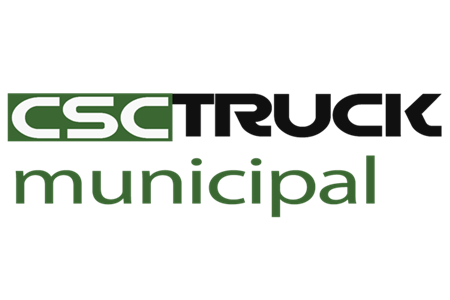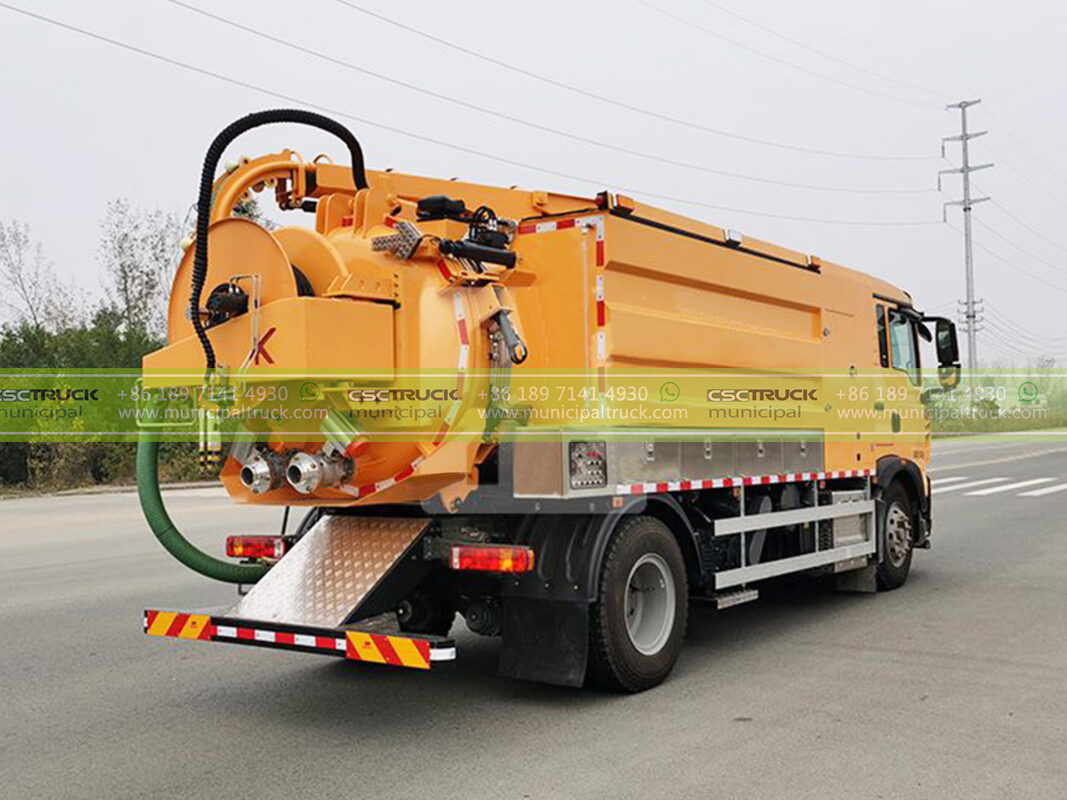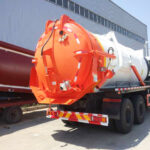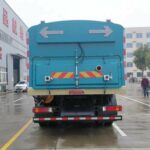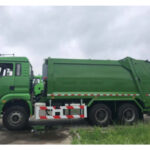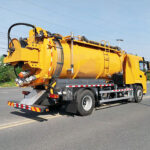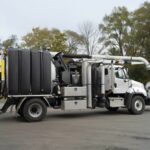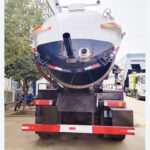As municipal budgets tighten and climate stressors intensify, public works departments face an existential dilemma: how to maintain aging sewer networks with fewer resources amid escalating regulatory demands. The emergence of combo sewer jetter trucks represents a paradigm shift—consolidating high-pressure cleaning and vacuum loading into a single platform that delivers transformative operational efficiencies while addressing spatial, financial, and environmental constraints that plague historic and modern cities alike.
The Unsustainable Burden of Dual Fleet Operations
Traditional sewer maintenance requires two specialized vehicles that create compounding inefficiencies:
Logistical Nightmares
Coordinating separate jetter and vacuum units consumes 30-45 minutes per job site according to Phoenix Water Department metrics—a crippling delay when responding to sewage overflows during monsoon season. In Philadelphia’s narrow Society Hill district, parked vacuum trucks blocked emergency access lanes 17 times in 2022 alone, triggering $284,000 in fines.
Prohibitive Ownership Economics
Maintaining separate fleets drains municipal coffers:
- Maintenance Overlap: Duplicate engine platforms (typically Cummins L9) require identical parts inventories
- Storage Footprint: Separate vehicles occupy 140m² of depot space versus 65m² for a combo unit
Tokyo’s Bureau of Sewerage calculated that deploying 40 combo trucks reduced annual fuel consumption by 280,000 liters—equivalent to powering 92 households for a year—simply by eliminating redundant transit.
Engineering Synergy: How Dual-Functionality Works
Modern combo trucks integrate once-incompatible systems through revolutionary design:
Hydraulic Power Sharing
A single 450hp engine drives both functions through intelligent load-sensing hydraulics. The Vactor 2100i’s dual-circuit system prioritizes jetting pressure (4,000 PSI at 20 GPM) during cleaning cycles, then instantly redirects power to vacuum generators (4,800 cfm) for extraction—all without engine rev cycling that increases emissions.
Multi-Phase Filtration
Recovered debris passes through three-stage separation:
- Cyclonic Pre-Filter: Removes rocks/bricks before tank entry
- Hydro-Kinetic Baffles: Separates solids from slurry
- Dewatering Press: Compresses waste to 35% solids content
This allows continuous operation where traditional vacuum trucks would require mid-job dumping—critical during Boston’s 2024 blizzard when crews cleared 18 miles of storm drains without leaving the emergency corridor.
Operational Advantages Beyond Cost Savings
The true value emerges in performance metrics that redefine municipal service delivery:
| Scenario | Traditional Approach | Combo Truck Efficiency |
|---|---|---|
| Restaurant Row Grease | Jetter (2 hrs) + Vacuum (1.5 hrs) + Coordination | Single 2.2 hr operation |
| Post-Flood Sediment | Multiple equipment changeovers | Continuous clean/extract cycles |
| Toxic Spill Response | Delayed vacuum deployment risk | Immediate containment suction after jetting |
Seattle’s combined sewer overflow (CSO) program reduced average blockage clearance from 4.1 hours to 73 minutes using combo trucks—directly preventing 12 million gallons of annual untreated discharges to Puget Sound.
Specialized Applications Where Combo Trucks Excel
Certain urban challenges demand integrated capabilities:
Historic District Preservation
In Charleston’s French Quarter, combo trucks clear 18th-century brick drains without the vibration damage caused by separate jetter nozzles and vacuum hoses. The continuous operation prevents wastewater from soaking into fragile historic foundations between process steps.
Disaster Response Agility
When Hurricane Ida flooded New Orleans, combo trucks performed 3 functions simultaneously:
- Jetting to clear debris from submerged drains
- Vacuuming floodwaters directly into tanks
- High-pressure washing of contaminated surfaces
This eliminated the need for three separate crews in impassable streets.
Preventative Maintenance Optimization
Montreal’s AI-driven “Sewer Health” program uses combo trucks to:
- CCTV inspect lines with self-propelled cameras
- Jetter-clean trouble spots immediately
- Vacuum dislodged deposits before they migrate
This closed-loop process resolved 83% of issues in a single site visit versus 2.7 visits with separate units.
The Future of Integrated Wastewater Management
Next-generation combo systems are evolving into autonomous treatment hubs:
Onboard Water Recycling
Advanced units like the Vac-Con Sentinel filter and sterilize recovered water for immediate jetting reuse—reducing freshwater consumption by 90% during extended operations in drought-stricken Barcelona.
Real-Time Debris Analytics
Hyperspectral sensors classify extracted materials during suction, alerting operators to:
- Toxic industrial discharges (detecting mercury at 0.01ppm)
- Pre-failure pipe fragments (identifying cast iron spalls)
- Illicit drug lab waste (fentanyl trace detection)
Robotic Arm Integration
Deployable manipulators retrieve solid obstructions (shopping carts, tree roots) without crew entry—a critical safety upgrade after Houston reported 14 confined-space incidents in conventional vacuum operations.
The Ripple Effect on Urban Resilience
The operational consolidation extends beyond equipment savings:
- Traffic Impact: Fewer vehicles mean 40% less congestion during downtown maintenance in Toronto’s financial district
- Emissions Reduction: One combo truck eliminates 8.2 tons of annual CO2 equivalent versus separate units
- Labor Optimization: Milwaukee retrained vacuum operators as dual-certified technicians, boosting wages 23% while cutting staffing needs
As sewer cleaner trucks evolve into multi-role platforms, they mirror broader trends in municipal efficiency—where vacuum truck capabilities merge with jetting precision to create responsive, adaptive infrastructure guardians. These technological syntheses represent more than mechanical innovation; they embody a fundamental reimagining of urban stewardship in an era of compounding challenges. On the rain-slicked streets of Portland or the sun-baked avenues of Dubai, combo trucks now navigate with dual-purpose determination—their synchronized systems humming a hymn to doing more with less, preserving our cities’ hidden veins without breaking the surface calm.
